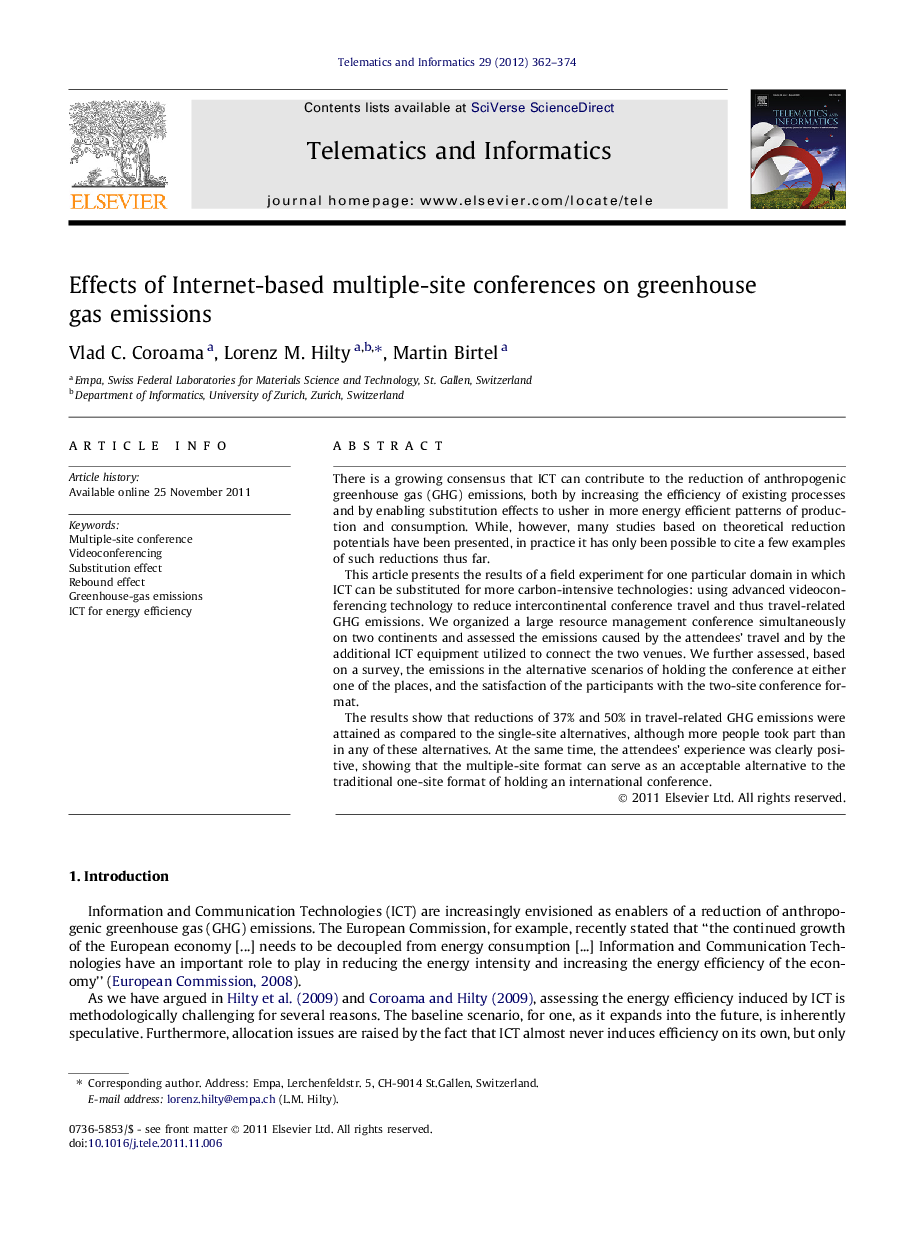| کد مقاله | کد نشریه | سال انتشار | مقاله انگلیسی | نسخه تمام متن |
|---|---|---|---|---|
| 466067 | 697762 | 2012 | 13 صفحه PDF | دانلود رایگان |

There is a growing consensus that ICT can contribute to the reduction of anthropogenic greenhouse gas (GHG) emissions, both by increasing the efficiency of existing processes and by enabling substitution effects to usher in more energy efficient patterns of production and consumption. While, however, many studies based on theoretical reduction potentials have been presented, in practice it has only been possible to cite a few examples of such reductions thus far.This article presents the results of a field experiment for one particular domain in which ICT can be substituted for more carbon-intensive technologies: using advanced videoconferencing technology to reduce intercontinental conference travel and thus travel-related GHG emissions. We organized a large resource management conference simultaneously on two continents and assessed the emissions caused by the attendees’ travel and by the additional ICT equipment utilized to connect the two venues. We further assessed, based on a survey, the emissions in the alternative scenarios of holding the conference at either one of the places, and the satisfaction of the participants with the two-site conference format.The results show that reductions of 37% and 50% in travel-related GHG emissions were attained as compared to the single-site alternatives, although more people took part than in any of these alternatives. At the same time, the attendees’ experience was clearly positive, showing that the multiple-site format can serve as an acceptable alternative to the traditional one-site format of holding an international conference.
► Advanced videoconferencing technologies contribute to reducing conference travel.
► We distributed a conference between two locations in Switzerland and Japan.
► Channels for speakers, audience and two “TelePresence” hotspots in coffee break areas.
► Energy for telecommunications was neligible compared to energy saved by avoided travel.
► Acceptance of the specific technologies used to connect the two venues was high.
Journal: Telematics and Informatics - Volume 29, Issue 4, November 2012, Pages 362–374